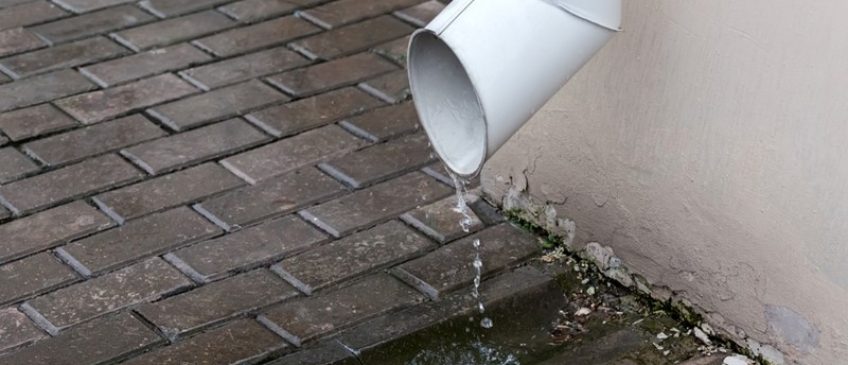Diverting rain water mitigates many expensive and potentially life threatening risks. Melting snows, spring rains, lack of water pickup by trees and plants, and the absence of sun to dry the ground in the winter can create destructive natural forces. These forces can cause significant damage to your home. The damage can begin as an elusive invisible force that occurs underground. It is unseen until great damage has already occurred. Then it is confusing. “How did this much water get into our basement?” It is a heartbreaking nightmare for any home owner. What can happen when rainwater is not diverted away from your house?
- Water permeates through foundations, basement walls, and floors.
- Water finds its way through any crack or flaw in a wall.
- Slow drying water gives off a dank, musty stench.
- There is great damage to carpet and wood flooring materials.
- Standing water promotes growth of mold spores, which can cause asthmatic symptoms.
- When heavy rain water is not diverted it will enter the home through basement windows.
- Concrete block foundations often crack in the joints between blocks due to heavy water.
- Poured concrete or ICF walls can develop or crack, which become water channels into the home.
- Poured walls have seams between the pours which are damaged by water.
- Older foundations are usually constructed of various shapes of granite and fieldstone. Even with mortar between the stones, they offer many passages for water to follow into the home.
- Water will enter the house through utility penetrations such as water, sewer, gas, or electrical conduits.
- Water will cause rot, which is attractive to termites.
- Mushrooms and other disgusting fungi will grow INSIDE musty homes when heavy rainwater is not properly diverted.
- Standing water is a breeding ground to mosquitoes.
Nightmare in Lancaster, Pennsylvania: during the historic 2011 flooding, a Lancaster family was awakened to the sound of roaring water and mass destruction occurring in their basement. There was no preparation to divert massive amounts rainwater away from their home, which happened to sit in a low section. Excessive rainwater flooded the grounds around their house. The pressure from the water was so extreme that the basement walls buckled causing a volcanic like eruption of the soil underneath. The soil shot at least six feet into the air burying their washer, dryer, hot water tank, etc. Every item and utility in their basement was destroyed. The displacement of soil caused overall foundation collapse and massive structural damage. The house was abandoned. If diverting rainwater does not take place, then a watertight house could even float, which typically results in an unstable structure and compromised foundation. When diverting water away from a house does not occur, the damage will likely be severe and the repair (if possible) will be very, very costly.

